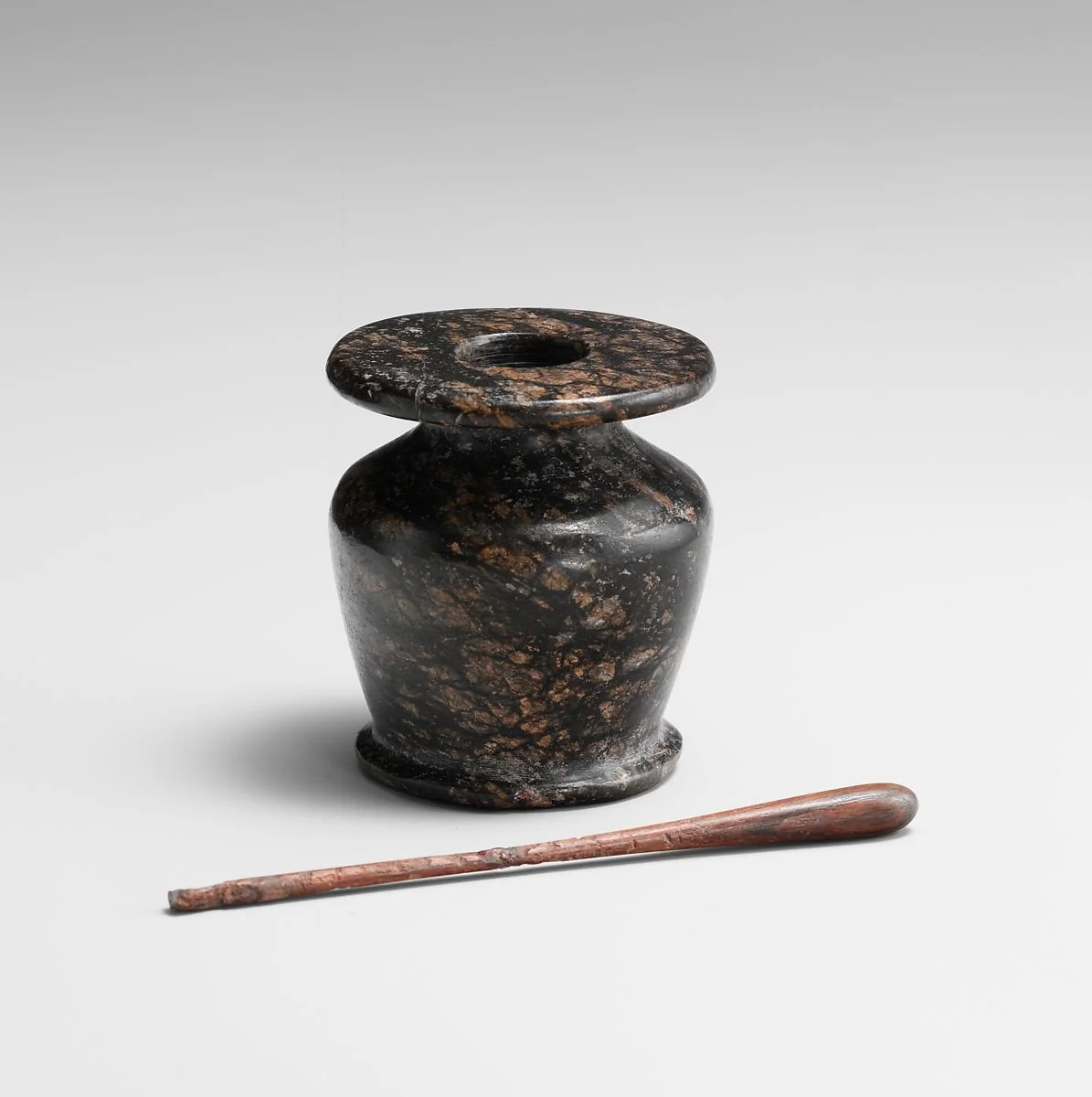BACKGROUND
Welcome
“I’m Your Venus: The Reception of Antiquity in Modern Cosmetic Advertising and Marketing”, a conference hosted by Drs. Laurence Totelin and Jane Draycott, aims at better understanding the centrality of antiquity in the construction of modern standards of hygiene and beauty, as well as examining and critiquing the image of antiquity that emerges from the modern material. The conference seeks to explain the prominence of certain ancient figures, be they divine or human, in the modern cosmetic industry, and how these ancient figures are used to promote certain standards, such as whiteness or exoticism, thinness, femininity and masculinity, and youth. The Makeup Museum’s exhibition is intended as a supplement to the conference that explores the same themes on a more granular level, as the Museum’s collection focuses exclusively on makeup. The exhibition will examine how makeup artifacts such compacts, powder boxes, lipsticks and their advertising reference antiquity and reflect modern perceptions of both the ancient world and beauty ideals.
The full conference program is available here.
All images in the exhibition are from the Makeup Museum’s collection unless otherwise noted.
Ancient Makeup History
Before the topic of antiquity in modern makeup advertising can be addressed, a brief summary of the makeup used in Greek, Roman and Egyptian civilizations is necessary. This is not to say that makeup in ancient cultures outside of these three is not influential or important, but the focus will be on them as they are the most frequently referenced in modern Western advertising. Also, a rather egregious and sweeping blind spot in makeup history is the lack of accessible information on basically any other ancient cultures outside of Greece, Rome and Egypt. Makeup history for regions or groups that have rich cosmetic traditions, especially Asia and indigenous peoples across the globe, is mentioned only in passing or left out entirely of most texts produced by Western authors.
Egypt
Makeup was essential to the ancient Egyptians, so much so that some were buried with cosmetic containers for use in the afterlife. Women and men of all social strata wore kohl eye liner, a black powder made from lead, for both religious and medicinal purposes. Malachite was sometimes added to their eye makeup, a mineral that produced a green hue. Egyptians wore lip and cheek color as well, made from red ochre.(1)
Egyptian kohl pot and applicator, ca. 1492-1473 B.C.E. Image from metmuseum.org
Greece and Rome
Scholars agree that there is little difference between the makeup habits of the ancient Greeks and Romans. Generally speaking, a natural look was favored. Pale skin for women was desirable, as it indicated she was carrying out her proper role in the home and not outdoors. This was achieved with a white face powder made from lead. Eyes and lashes were defined to make them look larger and brighter with soot, but done with a lighter hand compared to the Egyptians. Rosy, but not heavily painted, cheeks and lips completed the makeup. Some men wore makeup during the Roman empire, but it was generally frowned upon by their peers, who believed it made them appear effeminate.(2)
As the exhibition will reveal, the makeup practices of the ancient Egyptians, Greeks, Romans figured prominently in the modern cosmetic industry’s conception of beauty and heavily influenced its marketing.
Richard Corson, Fashions in Makeup: From Ancient to Modern Times (revised 2005 edition), and Lisa Eldridge, Face Paint: The Story of Makeup (2015).
Susan Stewart, Cosmetics and Perfumes in the Roman World (2018). See also Ortha L. Wilner, “Roman Beauty Culture” (1931) in The Classical Journal, vol. 27. no. 1. and Chapter 4 of “On Beauty: Ancient Perceptions of Beauty from Classical Greece to Imperial Rome,” (2021) by Maya Jess, University of Iowa.

